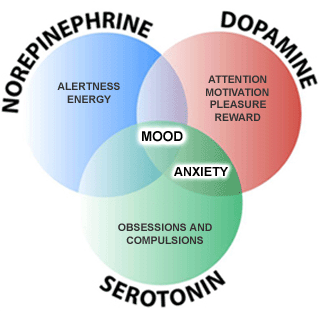
Exercise as a Natural Antidepressant
The Profound Impact of Exercise on Mental Health: A Comprehensive Guide
Introduction
Ever felt the weight of the world on your shoulders? You’re not alone. In our fast-paced, often overwhelming lives, mental health struggles like anxiety and depression are becoming all too common. But guess what? There’s a fantastic remedy right at your fingertips that often gets overlooked: exercise. Research shows that regular physical activity doesn’t just help our bodies stay fit; it can also work wonders for our mental health. In this guide, we’ll explore the dynamic relationship between exercise and mental well-being and how moving your body might just be the game changer you need.
Primary Keyword: Exercise and mental health
Exercise as a Natural Antidepressant
Let’s kick things off with an empowering thought: exercise can serve as a natural antidepressant. Studies reveal that getting active can significantly ease symptoms of depression and anxiety. For many of us grappling with mild to moderate mental health challenges, working out can be as effective as medication or talk therapy. Isn’t that encouraging?
– Supporting Evidence: The National Institutes of Health points out that activities like jogging, swimming, or cycling can work wonders by boosting mood-enhancing hormones and positively influencing brain chemistry.
Varied Forms of Physical Activity
Here’s the beautiful part about using exercise to lift your spirits: it comes in so many forms! You don’t have to hit the gym and sweat it out relentlessly. Simple actions like walking, gardening, or even tidying up around the house can provide substantial benefits for your mental well-being. This variety not only makes it easier for everyone, regardless of fitness level, to join in, but it also chips away at the hurdles that often keep people from getting active.
– Actionable Advice: The Better Health Channel recommends aiming for at least 150 minutes of moderate aerobic activity each week. Don’t stress—this can include light activity throughout your day, making it easier to meet those guidelines and have a positive impact on your mood.
Understanding Psychological Mechanisms
To grasp how exercise can shape our mental health, let’s peek behind the curtain at what’s happening in our bodies. Regular physical activity boosts blood flow to the brain, helps balance hormones, and regulates the hypothalamic-pituitary-adrenal (HPA) axis—essential to mood control.
– Further Insights: The Mayo Clinic tells us that even short bursts of activity, like three 10-minute walks, provide substantial mental health benefits. These little snippets of movement not only brighten your mood but can also leave you feeling accomplished and more confident.
Practical Applications: Integrating Exercise into Mental Health Care
Creating an Exercise-Friendly Mental Health Plan
Adding exercise to your mental health toolkit can enhance treatment outcomes by addressing both the physical and emotional aspects of well-being. Here’s a roadmap for individuals and mental health professionals on how to create a supportive exercise-friendly health plan:
1. Customized Exercise Plans: Craft workouts that suit your unique preferences and abilities. This helps increase the chances that you’ll stick with it and actually enjoy the process.
2. Encourage Participation: It’s important for mental health professionals to support clients in engaging in activities they love—be it dance, yoga, or hiking. These enjoyable choices can truly uplift spirits.
3. Mixing Exercise with Traditional Therapies: There’s growing evidence that combining workouts with traditional treatments can fill in the gaps for better results. Think about incorporating structured exercise programs into your current mental health routine.
4. Track Your Journey: Keeping a journal or using apps to log your activities and mood improvements can help you recognize your progress, which is always motivating!
5. Get Involved with Others: Joining group classes or local sports can help you stay accountable while also building those important social connections that are essential for mental health.
How to Apply This Information
Ready to harness the power of exercise to boost your mental health? Here’s how to start today:
1. Define Your Goals: What do you hope to achieve through exercise? Whether it’s elevating your mood, regulating your emotions, or boosting energy, set clear, achievable goals that motivate you.
2. Start Small: If you’re just getting back into exercise, begin with manageable goals. A five-minute walk daily can set the groundwork for meaningful change.
3. Find Joy in Movement: The more enjoyable your chosen activities, the more likely you are to stick with them. Try different forms of exercise until you discover what sparks joy in you.
4. Make It Routine: Add physical activity to your daily schedule and treat it as an essential appointment—something you won’t skip.
5. Seek Support: Whether it’s a workout buddy or a class, having someone to share the journey with can enhance both motivation and enjoyment.
Conclusion
The bond between exercise and mental health is powerful, offering you a real chance to engage actively in your emotional well-being. By recognizing the benefits and practical ways to integrate exercise into your life, you can take a proactive step toward feeling healthier and happier.
So, what about you? What exercises have you found helpful for your mental health? I’d love to hear your stories in the comments below! Let’s embrace the positive impacts of movement together—it’s time to make a change and feel better through exercise!
Hashtags: #exercise #health #mental #activity #what #mood #physical #like #also #well #being #activities #into #often #just
